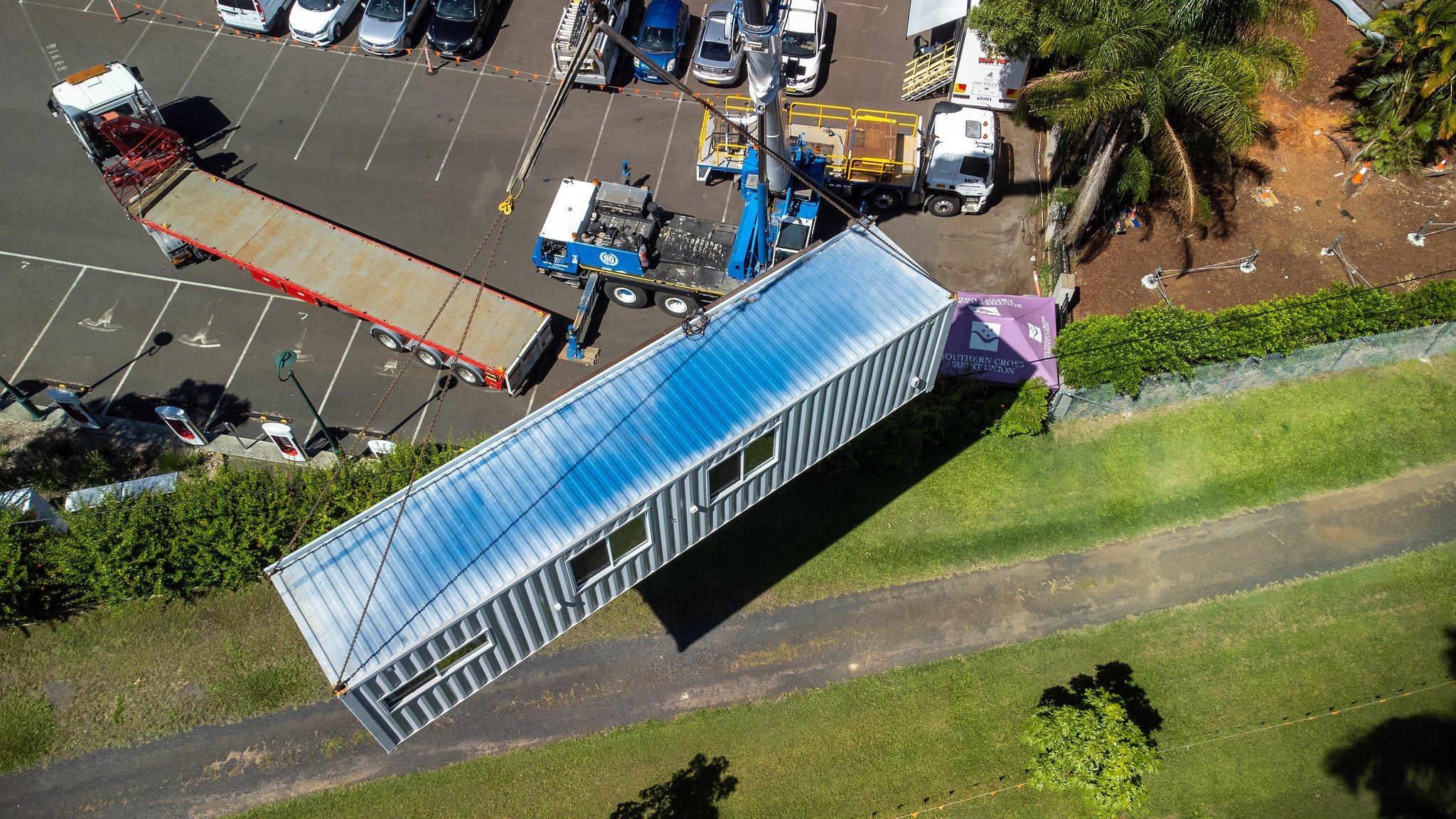
This week saw a delicate operation at the Byron Bay Wildlife Hospital and Sanctuary, with the installation of a new hospital ward, via truck and crane, in what was once a playground, now to be a Wildlife Recovery Centre.
In other big news for local wildlife lovers, the NSW government has reserved $1.5 million a year, for four years, to cover Byron Bay Wildlife Hospital’s operating costs, no matter which party wins the state election.
The new funding starts in July, but will not cover new purchases, projects or equipment, so the hospital is still firmly in fundraising mode.

CEO Dr Stephen Van Mil told The Echo the funding shortfall between now and 30 June is $800,000. ‘We’ve just last week raised $250,000. So we’re looking for another $550,000 to get through to the end of the financial year.’
He said the last two and a half years have been a battle, with rising costs, and no secure income, as none of the furry, feathered and scaly patients of the hospital have credit cards. Luckily the people of the Northern Rivers and beyond are very generous when it comes to helping wildlife.
‘Yes, we’ve relied entirely on philanthropy, until this government money kicks in,’ said Dr Van Mil. ‘Australians have been – particularly in this region – extraordinarily generous. And without that support, we simply wouldn’t exist. The fact is, we give everything away.
‘All our services are free of charge, including the medicines that we have to buy. We don’t charge anybody anything for the care of wildlife, and we calculated a few months ago, the average cost per patient is $555. So every single animal that comes in the door, most of them get anaesthetised, they have X rays, they have pathology done, then there are procedures and medications and hospitalisation, intensive care…
‘The average for all of that is $555. When you multiply that by a few thousand cases, you can see where the money gets into big numbers.’
The Byron Bay Wildlife Hospital website is always open for 100% tax deductible donations, and Dr Van Mil says potential supporters are welcome to contact him or any of his team directly for more information. ‘We have full DGR status, so we cheekily say, would you rather save wildlife or pay tax?’
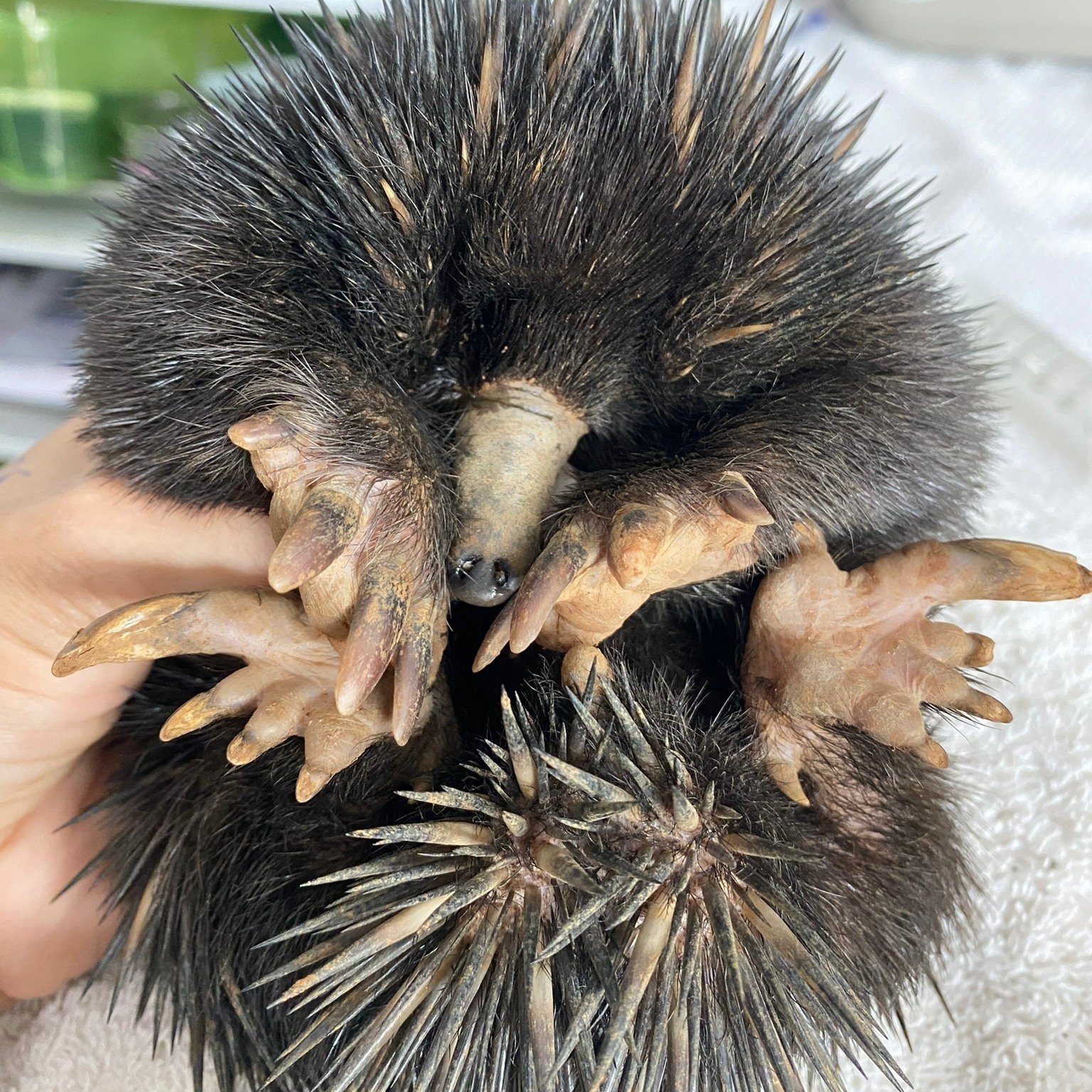
All about the patients
It’s been a mix of tragedies and good news stories with recent wildlife hospital patients, including a flying fox trapped in barbed wire with severe mouth injuries who ultimately had to be euthanised, a malnourished orphaned baby echidna (puggle) now recovering and doing well, and Carla the koala.
‘Yes, she was hit by a car nearby and rushed into here with skull fractures,’ said Dr Van Mil. ‘The team worked around the clock for three days and nights to stabilise her, then we transferred her to Friends of the Koala. Now she’s been released, and she’s been spotted doing well.
‘Those are the really rewarding stories, when you you take an animal that almost certainly would have died without without that critical care who ends up getting released back into the wild.’
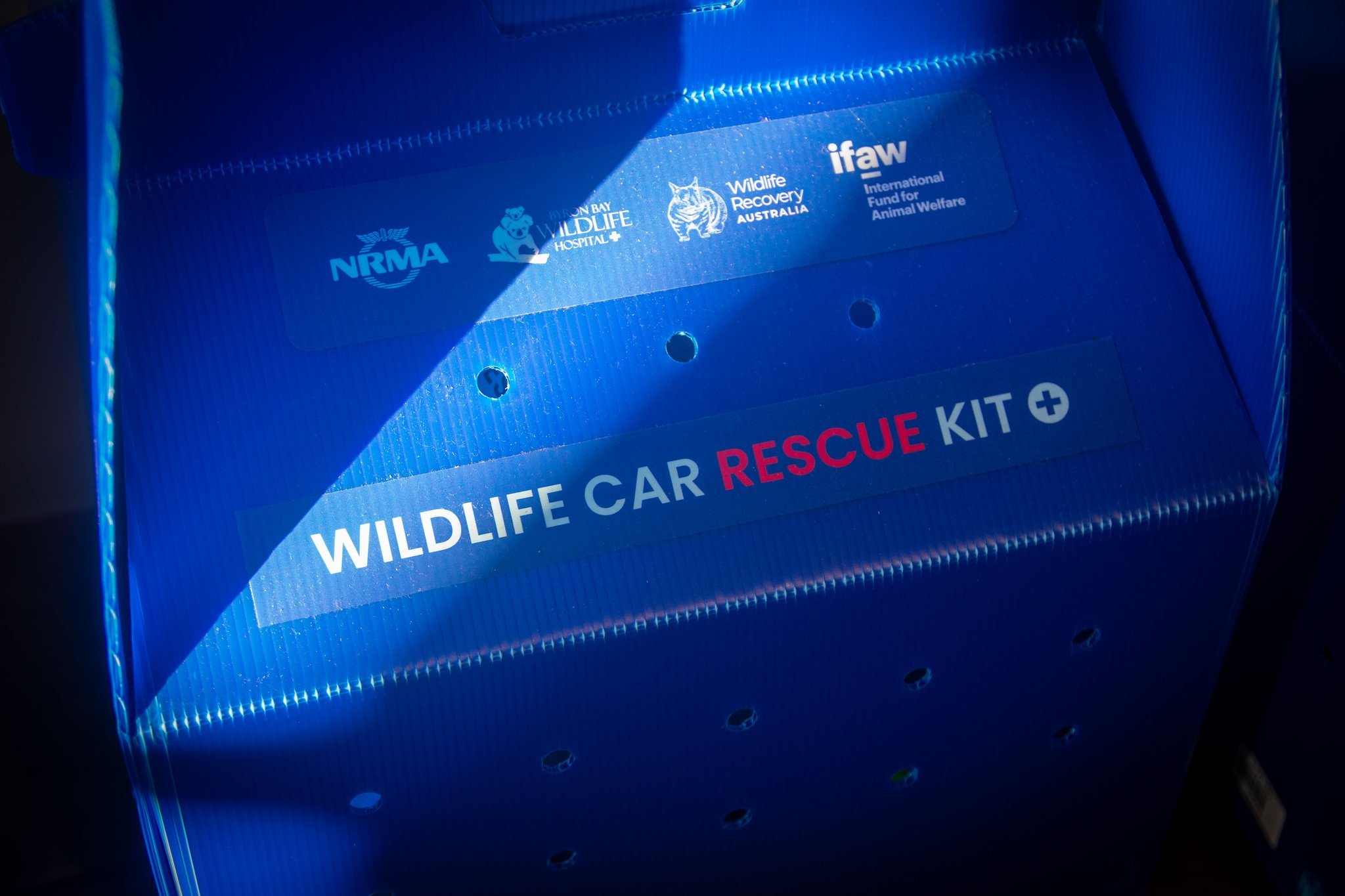
With so many animals coming into care after being hit by cars, an exciting new initiative is Wildlife Rescue kits, which are now available.
‘Yes, they can be purchased online from anywhere in Australia and they’ll be delivered. We have the kits here at the sanctuary too of course, so if people are in the region, they can collect them.
‘You can also get them through the NRMA,’ said Dr Van Mil. ‘They’ve been very popular. I think every car in Australia should have a wildlife rescue kit in the back.’
Hospital growing
The sanctuary has now acquired the old fish farm site on the southern side of the old Macadamia Castle site.
On the day The Echo visited, a new wildlife hospital ward (prefabricated in south Lismore, in the form of a giant shipping container) was being carried from this area, via an elaborate truck and crane operation, through the solar-powered car park, over fences and power lines, and into its new home.
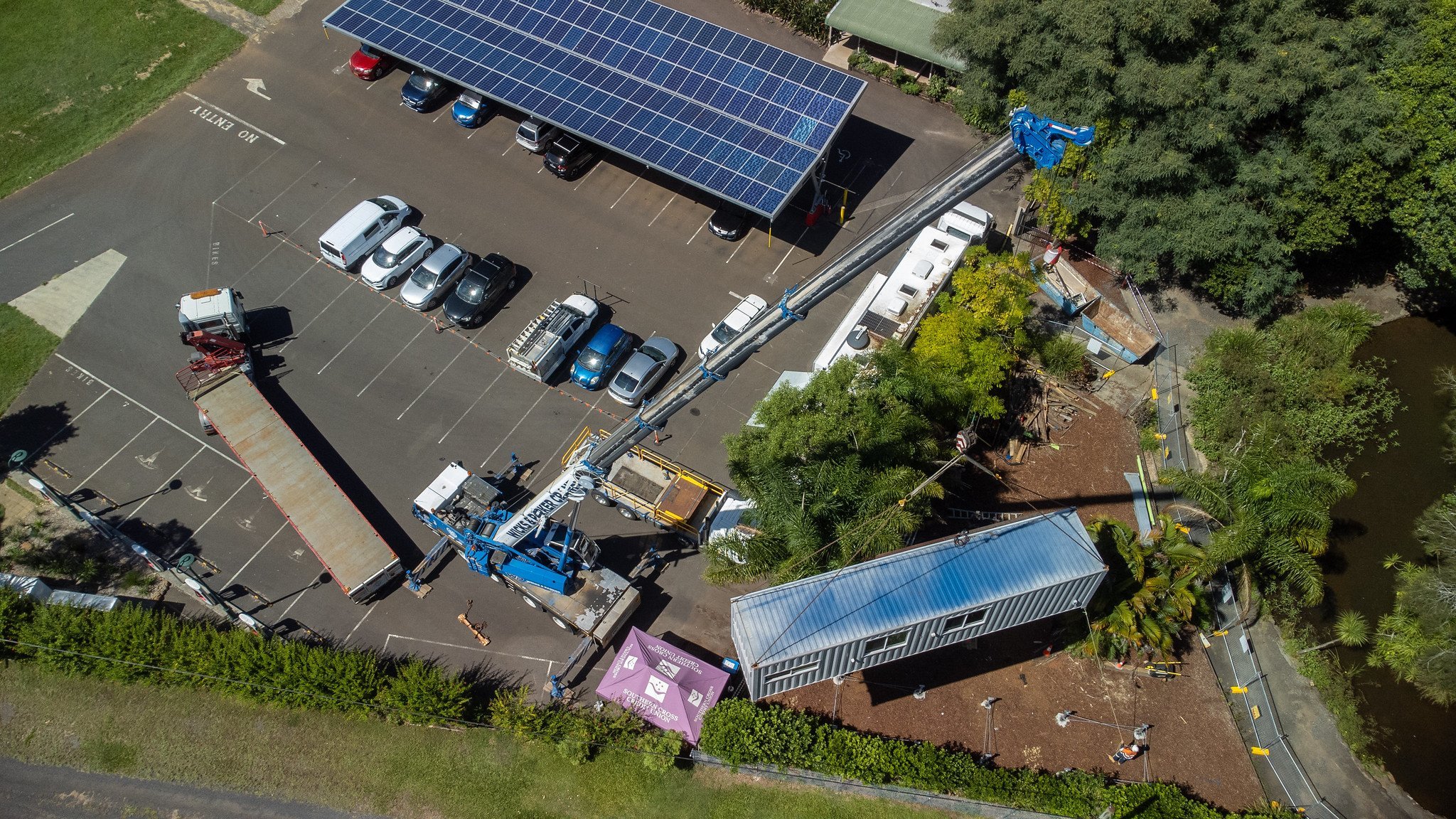
Dr Stephen Van Mil explained that this part of the sanctuary is being turned into a wildlife recovery area.
‘That’s going to be an extension to the hospital,’ he said. ‘It has its own reception area, administration and staff area and this new hospital ward which is literally being picked up this morning by a giant crane.
As well as his veterinary work, Dr Van Mil has been busy in recent months keeping the publicity wheels going via social media and the hospital’s TV show Wildlife Rescue Australia, which has led to some surprising outcomes.
‘We had a call on Wednesday from a lawyer in Sydney. He said he represents a client who is in a nursing home and not expected to live too much longer, sadly, who would like to leave his entire state to the wildlife hospital. That was just out of the blue, and extraordinarily kind and generous.
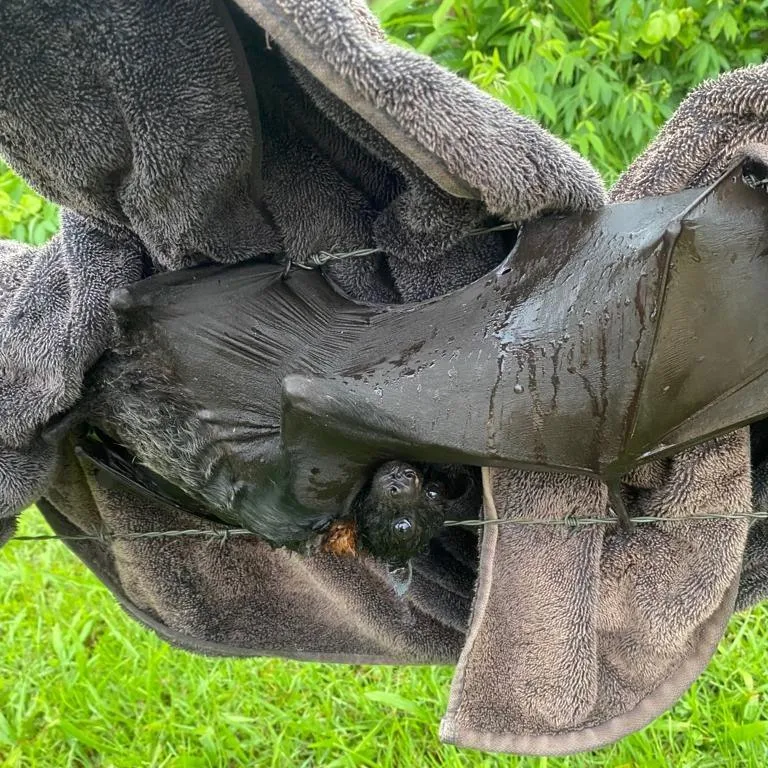
‘When the lawyer emailed me the details, he said the reason his client wanted to leave it all with us was he watched the television series.’
With threats to Australian wildlife constantly growing, Dr Van Mil says the need for fundraising never ends, especially considering the hospital’s mobile capability to travel to trouble spots around the country. ‘It’s always going to be either floods or fires now, isn’t it?’
‘We’ve proven that we’re here for the long haul, but the reality is it just takes a hell of a lot of resources to pull these things off.’
Sanctuary evolving
With the assistance of ‘incredible supporter’ Delvene Delaney, the inside of what was once the Macadamia Castle has now been opened up and transformed with new design and art ideas, adding air conditioning and keeping the famous cafe.
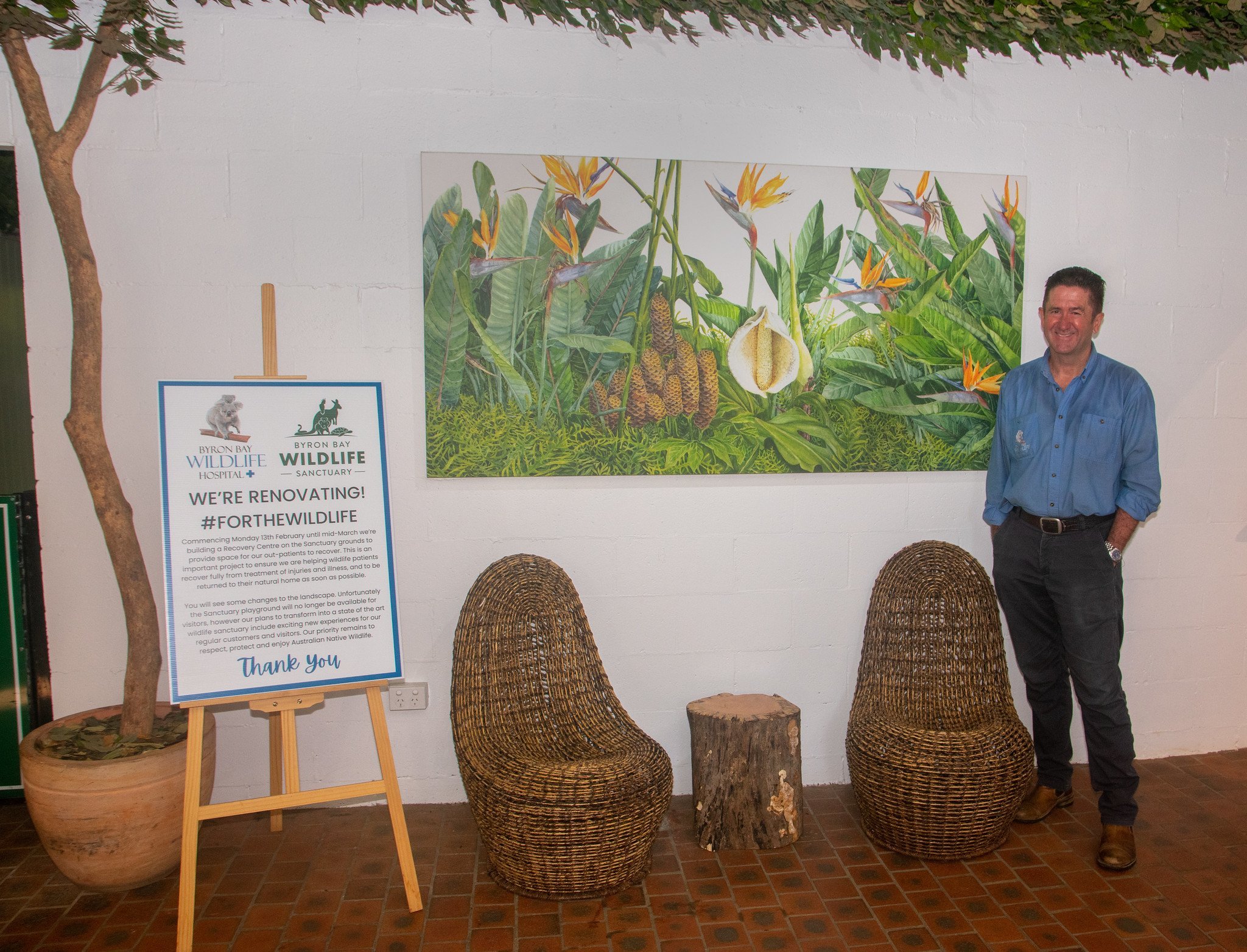
There is new wildlife-related merchandise, including nesting boxes and Monopoly games featuring iconic Ballina and Byron locations (including the Wildlife Sanctuary), with profits going directly to support the wildlife hospital.
Beyond rebranding, Dr Van Mil says the sanctuary side of the operation is going to be focused increasingly on native animals, complementing what’s happening with the wildlife hospital, and moving away from the past mix of native and farm animals.
‘We need to make the whole experience meaningful for visitors,’ said Dr Van Mil. ‘Whether they’re a five year old kid or an 80 year old person, we really want to give them a good experience.’
There’s clearly a growing need for wildlife education in the Northern Rivers, with habitat loss combined with massive numbers of car strikes and other human impacts taking a devastating toll on native birds and mammals of all species, including koalas.

‘Yes it’s hard to believe that something as sweet and slow as a koala can get smashed by cars, but it happens all the time,’ said Dr Van Mil.
‘Part of our partnership with the NRMA is trying to get drivers to think more carefully about their driving behavior, particularly at dusk and dawn, and at night. 70% of Australian mammals are nocturnal.
‘People need to slow down and be more vigilant. The NRMA estimates that 10 million native Australian animals are killed by cars on our roads every year.’
Wildlife Recovery Centre
Dr Van Mil said the new Wildlife Recovery Centre is being built thanks to the remarkable generosity of a local family, David, Sue and Scott MacRae, who donated a quarter of a million dollars.
‘Aside from the shipping container, we’ve got outdoor recovery cages, and a test flight aviary for birds, and a sea turtle recovery dock. So we can do a lot of the recovery on animals post-hospitalisation that we haven’t been able to do until now.
‘Because we removed that playground, the next focus for the sanctuary is to build a decent playground on the other side there. That’s part of why we need to keep raising capital, so we can keep doing projects like that.’

The tourist side of the sanctuary is also important to help pay the wages of the growing numbers of veterinary staff, nurses and support workers who keep the hospital ticking over, seven days a week as of this year.
‘Austraian wildlife are in a lot of trouble, and we’re just inundated with cases,’ said Dr Van Mil. ‘When we got going two and a half years ago, we didn’t have any idea, really, how dramatic the need is. And I guess, were we not here, most of those animals wouldn’t make it. That’s just the harsh reality.
‘Fortunately, once people realise the challenge that wildlife are facing, and once they see an organisation that’s helping provide solutions, they’re happy to support.
‘I’m not saying it’s easy, but the people are definitely out there and they care, and we’re extraordinarily grateful for that.’
You can find out more about Byron Bay Wildlife Hospital here.



